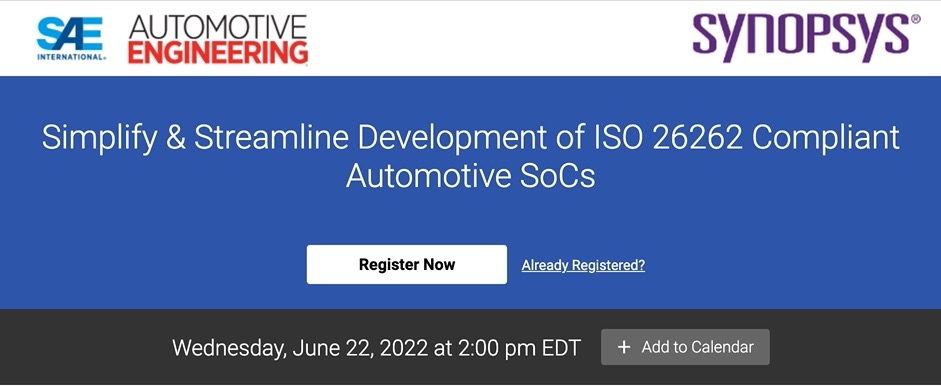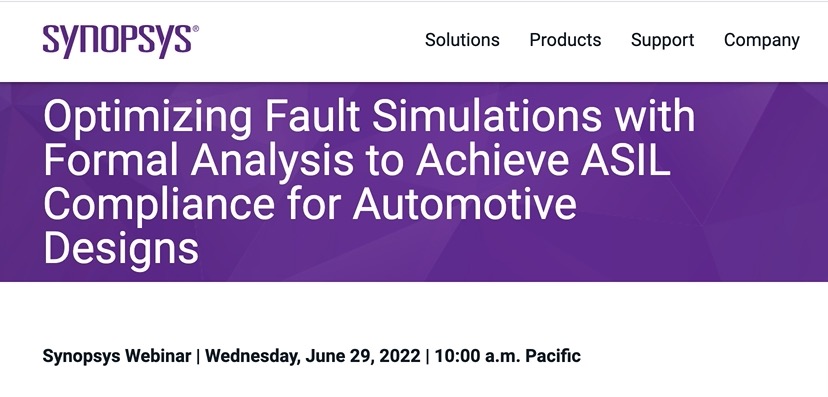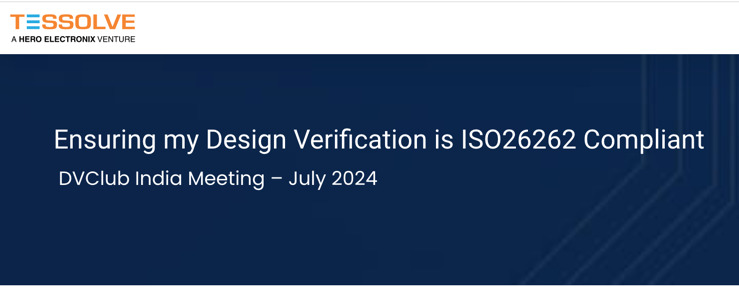ISO 26262
-
-

Analog Fault Injection Simplifies ISO 26262 Compliance
As the automotive market moves toward electrified drivetrains and autonomous driving systems, chip makers increasingly need to design integrated mixed-signal chips that meet the ISO 26262 automotive certification. With these complex designs, designers will require automation to overcome the limits of using expert judgment to ensure compliance. Integrating functional safety analysis into their existing design… Analog Fault Injection Simplifies ISO 26262 Compliance
-
-

Improving IP Quality For Compliance
Establishing traceability is critical for many organizations — and a must for those who need to prove compliance. Using a platform approach, you can create end-to-end verification traceability for your designs, if you have the right tools. Perforce solutions help leading organizations create a single source of truth, allowing teams to create complete traceability, from… Improving IP Quality For Compliance
-

Navigating the Intersection of Safety and Security
Vehicle systems and the semiconductors used within them are some of the most complex electronics seen today. Ensuring these systems are both functionally safe and secure from cyberattacks is mission critical. Join Siemens and Rambus to discuss how to secure your automotive electronics and ensure these solutions meet the requirements of ISO 26262. In this… Navigating the Intersection of Safety and Security
-
-

Functional Verification to Fault Simulation: Considerations and Efficient Bring-Up
Electronic systems in automobiles are growing rapidly in size, complexity, and critical functionality. As a result, functional safety verification is emerging as an essential requirement for automotive SoC and IP designs. In order to assure that even the most stringent safety standards are met at a faster pace, comprehensive and fast fault injection and simulation… Functional Verification to Fault Simulation: Considerations and Efficient Bring-Up
-

Simplify & Streamline Development of ISO 26262 Compliant Automotive SoCs
Standards such as ISO 26262 define strict requirements, processes, and methods that all stakeholders – IP vendors, sub-system developers, and semiconductor SoC and system developers – must abide by when designing safety-critical automotive products. One such requirement is the Development Interface Agreement (DIA), which defines the interactions, interfaces, responsibilities, dependencies, and work products exchanged between… Simplify & Streamline Development of ISO 26262 Compliant Automotive SoCs
-

Optimizing Fault Simulations with Formal Analysis to Achieve ASIL Compliance for Automotive Designs
Most safety critical SoCs, such as those developed for automotive driver aid systems, require ASIL-D compliance. ASIL-D is the highest grade in the ISO 26262 Standard’s risk classification system, required less than 1% Single Point Fault. According to the ISO 26262 Standard, fault campaign on the targeted designs is the recommended methodology to generate FMEDA… Optimizing Fault Simulations with Formal Analysis to Achieve ASIL Compliance for Automotive Designs
-
-

Ensuring my Design Verification is ISO26262 Compliant
Cadence, Bengaluru Sarjapur Outer Ring Road, Bengaluru, IndiaWith the widespread of the modern automobiles, run and regulated by automotive ECUs, the need for advanced safety features has also become inevitable. And this is why today modern vehicles are required to adhere to the safety standards listed within the Automotive Safety Integrity Level (ASIL).In this DVClub meeting our speakers will share best practices… Ensuring my Design Verification is ISO26262 Compliant
-
-

Simulating Auto Systems & E/E Architectures for power and performance using VisualSim
Estimating latency and power for different use-cases in Systems, ECU and Networks Overview: This session will focus on a common system-level simulation platform that can be shared by Semiconductor companies, Tier One Suppliers, OEMs in designing the entire E/E architecture. The transition to everything digital and electronics is causing a number of design challenges across the… Simulating Auto Systems & E/E Architectures for power and performance using VisualSim